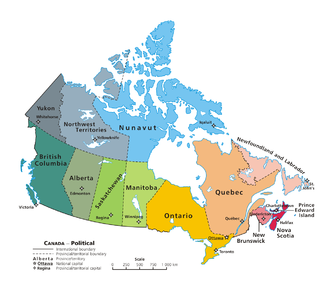Unemployment extremes
The lowest level of national unemployment came in 1947 with a 2.2% unemployment rate, a result of the smaller pool of available workers caused by casualties from the Second World War.
The highest level of unemployment throughout Canada was set in December 1982, when the early 1980s recession resulted in 13.1% of the adult population being out of work due to economic factors that originated in the United States. [5] The primary cause of the early 1980s recession was a contractionary monetary policy established by the Federal Reserve System to control high inflation. [6]
During the Great Depression, urban unemployment throughout Canada was 19%; Toronto's rate was 17%, according to the census of 1931. Farmers who stayed on their farms were not considered unemployed. [7]
According to data from Statistics Canada, youth unemployment hit 14.6% in July 2025, the highest it had been since 2010 (outside of the COVID-19 pandemic). [8]
This page is based on this
Wikipedia article Text is available under the
CC BY-SA 4.0 license; additional terms may apply.
Images, videos and audio are available under their respective licenses.
